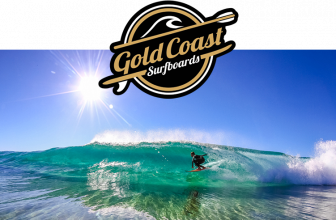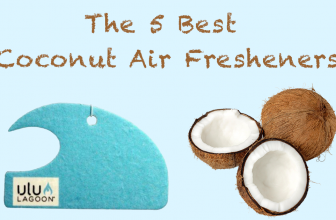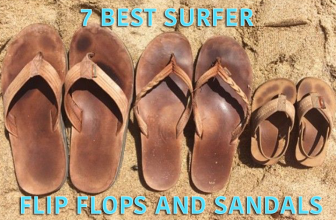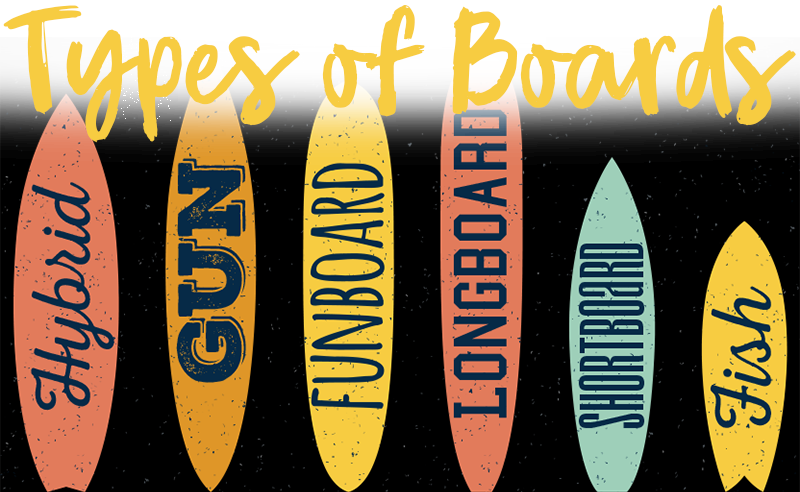
Though many people may not actually be aware of it, there are many surfboard types out in the world.
More...
While tons of surfers just surf what’s available or what is cheapest, you should know that choosing a certain type of surfboard can have a huge effect on your riding ability and style.
With many different characteristics to check out such as board dimensions, shapes, sizes, fin types, tail type, rocker curve, and much more, making the best choice can sometimes be a bit overwhelming.
Luckily, we’ve created an article to give you an overview of how different surfboard types function.
These can sometimes be referred to as soft tops, softboards, or foamies.
They are the best type of surfboard for entry-level surfers, as they have the best characteristics for stability and buoyancy to help the rider catch waves.
They are also much safer than epoxy boards because they are made out of foam.
If you are afraid of getting hit in the head, or even hurting somebody else, these boards will diminish the chance of serious injury in the water.

Groveler surfboards are essentially short boards with some extra design components to help a surfer catch waves on smaller days.
They have unique concave underbellies that make it much easier to catch waves that aren’t riding as high.

Funboards are somewhat of a hybrid between longboards and shortboards in that they give you the ability to paddle much easier than on a shortboard, though make it much easier to maneuver than on a longboard.
No matter what kind of waves are out that day, you’ll typically find that a funboard will suit your needs.
Marketed more towards entry-level and intermediate surfers, these funboards lie on the median of size and shape and will work for just about anyone.
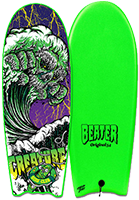
Though fish surfboards are short, they differ quite a bit from shortboards.
These boards are haped like fish with a rounded nose, more width in the center, and a narrow tail, hence the name.
These boards are typically no smaller than 5’2” and no bigger than 6’4” with width between 18” and 22”.
They are typically easier to catch smaller to mid-sized waves on and have excellent speed and turning capabilities.

Hybrids are a bit harder to classify, as there are so many different combinations of qualities that make these boards hybrids.
If we were to generalize, hybrids typically have more width, length, and nose roundness than your typical shortboard.
Seeing a shortboard-fish hybrid is pretty common.
These are excellent for surfers who are a bit more experienced and are looking to experiment with board characteristics.
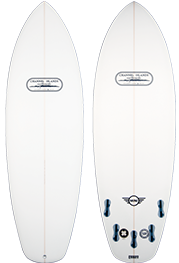
The mini-mal is derived from the Malibu surfboard, which is essentially a slightly shorter longboard with a more narrow width and tail for better turning capabilities.
A mini-mal takes the idea of the Malibu even further and makes it shorter.
These typically come equipped with one large fin or three small fins and are excellent for riders who want the same feel as a longboard.
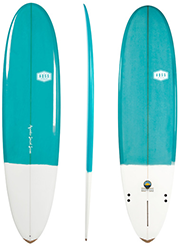
Gun surfboards have a fairly large range and can be found anywhere between 6’ and 10’.
They’re made extremely sharp and narrow with point noses and tails.
This makes them great candidates for cutting deep into the walls of bigger waves, as well as paddling out much further with less strain.
Most big wave surfers that are out hunting the biggest and baddest waves in the world are typically riding gun surfboards.
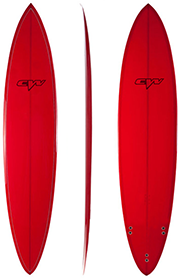
These are easily the most popular types of boards that you’ll be likely to see at just about any surfing spot in the world.
Used by trick surfers or contest surfers, and typically sized between 5’6” and 6’4” with a squaretail, these boards are best utilized in the hands of experienced surfers.
These boards are much harder to paddle than most boards, though the immense power and control that they offer makes up for it.
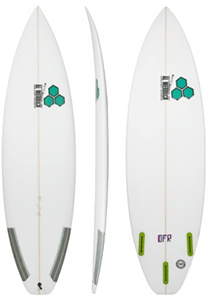
You can consider most any board that is over 8’ to be a longboard.
Sometimes referred to as cruiser or logs, these round nose giants are extremely stable boards that are great for entry-level surfers who are learning to paddle and catch waves.
Longboards are pretty much the opposite of shortboards in that they’re almost impossible to maneuver tightly, get big airs on, or do any tricks.
With that in mind, if you’ve ever seen the classic surfers hang ten or drop-knee turn onto big waves, then you understand the unique cool that is the longboard style.

Which Type Should You Choose?
Surfboard Anatomy
Dimensions
Length
The length of a surfboard can affect your performance immensely. Beginners will find that they learn better on longer surfboards, as they are far more stable and much easier to paddle on.
Width
The same thing for height goes for width. The wider the board, the more stable the board. Beginners should go for a board with more width
Depth
Depth refers to how thick a board is from deck to bottom. It is best to pick a thicker board if you are a heavier surfer, as they will float a lot better than thinner boards.
Parts Of A Surfboard
Deck
This is the top of the surfboard. They typically come in three different shapes: flat, step, and domed. They each have unique feels and performance quality. For soft top surfboards, they’re typically flat and made with foam materials
Nose
This is the front of the surfboard. Different shapes will make it harder or easier to catch onto waves, paddle out, or walk out onto the nose.
Tail
This is the back end of the surfboard. More than anything, this has a major impact on how you will surf. There are an array of tail shapes; swallow tails, fish tails, pin tails, and diamond tails being some of the most popular.
Rails
These are the edges of the surfboard. Different edges can affect your ability to gain speed, carve, latch onto wave walls, turn, or get into tubes.
Stringer
A board can have one stringer or multiple stringers, and it refers to the wood that runs vertically through the board from nose to tail. They are the reason surfboards don’t snap after a few ride. Some run straight down the center while other run along the rails. They provide flex and strength. Some pretty popular woods for stringers include balsa, bamboo, red cedar, and basswood.
Rocker
This is how much the surfboard curves. If a board has a big rocker, than the board has a bigger curvature. Bigger rockers can help you take on steeper waves, as well as maneuver in a tighter radius. If you were looking for a board that will just take you fast then a small rocker, if any, would be best.
Fins
Without fins, modern surfing would be just about impossible. Fins are the reason your board propels forward. Some fins help you turn tighter, some give you speed, some give you drag, and some just give higher quality performance overall. The main fin setups are single, twin, thruster, quad, and five-fin.
Frequently Asked Question
What types of materials do you typically find in surfboards?
Pretty much all of the modern surfboards that you see out in the water these days are made with foam cores. The two types of foams that you typically see are Polystyrene and Polyurethane. Next, you’ll see fiberglass cloth added across the bottom and the deck of the surfboard. This is for strength. Though fiberglass is the most common, some surfboard companies are starting to use materials such as carbon fiber. Lastly, for hard top boards, the manufacturer will completely cover them in resin to give it a glassy finish. Epoxy resin is one of the most popular and has been for over four decades.
What are the advantages of having an epoxy board?
Epoxy boards typically weigh a lot less than traditional fiberglass boards. Because they are lighter, they typically have better buoyancy. This is a great characteristic for beginner surfers. Fiberglass boards can easily be dinged up or cracked while epoxy boards are very strong can even stand landing on rocky shores. Lastly, because they don’t crack as easily, water won’t seep into them and ruin the boards. Fiberglass boards are notorious for getting ruined through delamination and rot. Overall, epoxy boards last a lot longer.
If you’re new to surfing, is it okay to buy a used board?
Absolutely! This is even great if you want to experiment with new sizes and shapes. Newer boards can easily cost over $500. Just make sure that the board you’re buying is in good, surf ready condition!
What kinds of waves are best when learning to surf?
You’ll want to find a beach with smaller waves that are no more than waist high. If you can see the waves curling over, essentially breaking from top to bottom, these are not ideal. If you begin surfing on whitewater with the proper board, such as a foamie, you’ll catch far more waves and have a safer time in the water.


